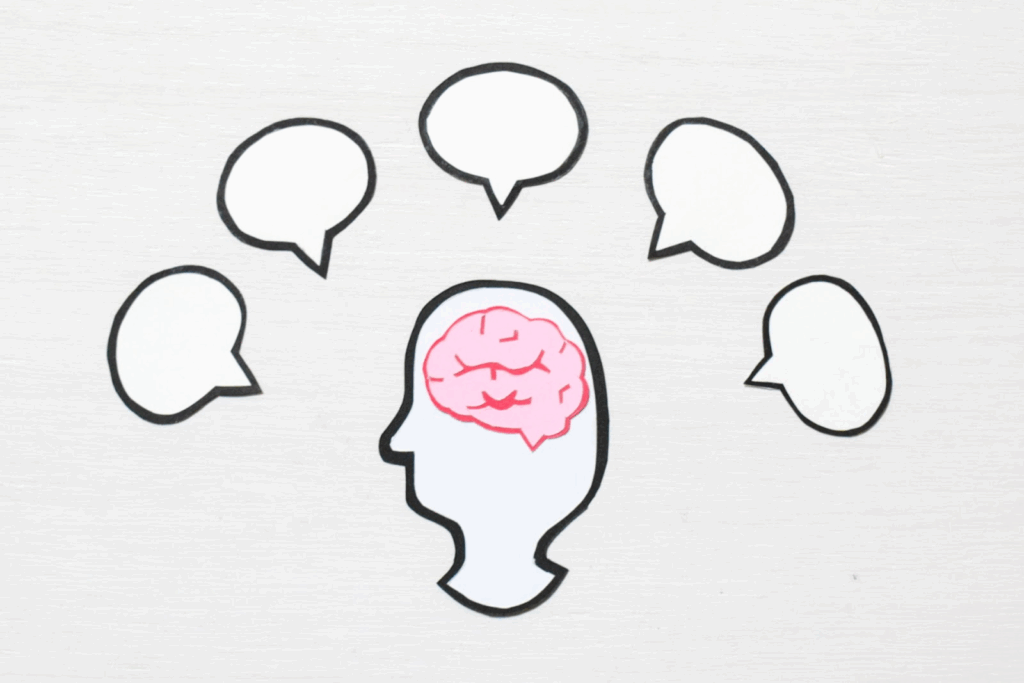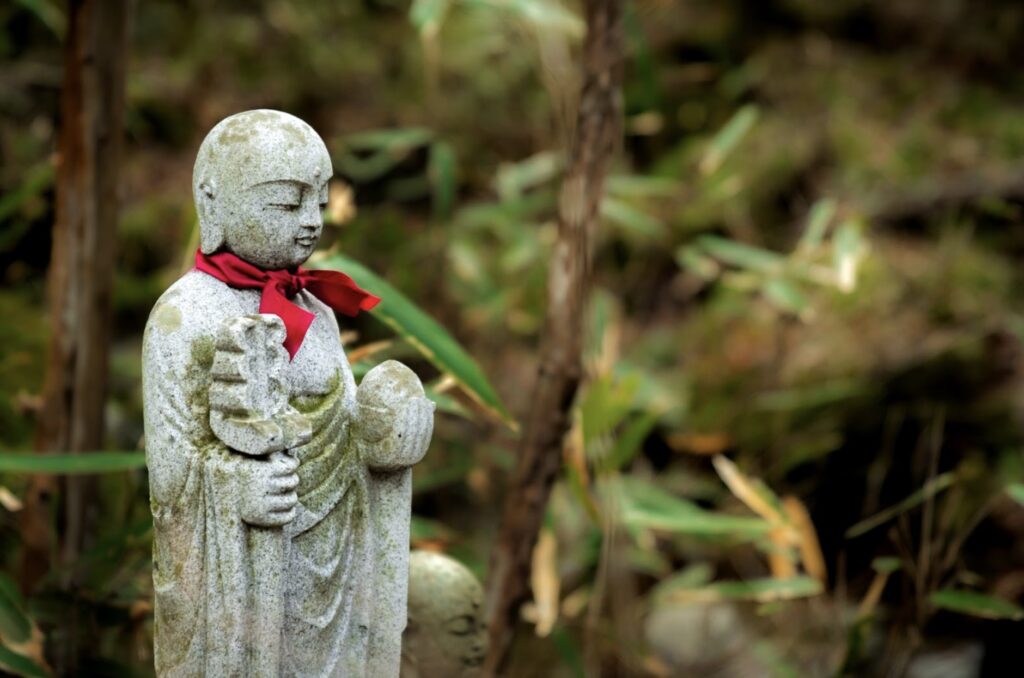What Is the Subconscious? From Science to Daily Life, Buddhism, and Meditation

Quick Summary
The subconscious mind plays a powerful role in daily life, influencing habits, emotions, and even health. Understanding the subconscious is essential for personal growth and meditation practice. This article explores the subconscious from psychology, neuroscience, Buddhism, and practical methods like Gassho meditation.
- Psychology & Science: The subconscious guides habits, emotions, and decisions outside awareness.
- Daily Life Examples: Everyday reactions often come from subconscious memory and conditioning.
- Buddhist View: The storehouse consciousness (ālaya-vijñāna) mirrors the subconscious in spiritual tradition.
- Practical Tools: Meditation, affirmations, journaling, and Gassho help reprogram the subconscious.
Introduction
When was the last time you felt anxious for no reason or instantly calmed by a familiar smell? These moments are not random—they are signs of the subconscious mind at work. Far from being mysterious, the subconscious quietly influences thoughts, habits, and emotional responses every day. By understanding it through psychology, neuroscience, and even Buddhist philosophy, we begin to see how subconscious awareness can transform life.
The Subconscious in Psychology and Psychoanalysis
In psychology, the subconscious refers to mental processes that function outside conscious awareness. Freud distinguished between the unconscious, which hides repressed desires, and the subconscious, which operates through habits, memory, and conditioned responses.
Modern psychology often uses the term implicit processes, highlighting how automatic decisions, emotional triggers, and learned patterns quietly guide daily life. These mechanisms explain why we sometimes act against conscious intentions—our subconscious scripts are already running.
The Science of the Subconscious

Neuroscience shows that subconscious activity is deeply embedded in the brain. Regions such as the basal ganglia regulate habits, while the limbic system processes emotional memory.
- Harvard research found that mindfulness meditation can physically change brain structure in just eight weeks, strengthening regions tied to memory and emotional regulation.
- Stanford studies demonstrated that meditation calms the amygdala, reducing subconscious stress responses.
- Habit research suggests that over 40% of daily actions are subconscious routines, illustrating how much of life runs on autopilot.
These findings reveal that the subconscious is not just a theoretical concept but a measurable system shaping behavior and health.
Everyday Life Examples

The subconscious reveals itself in subtle, everyday ways:
- Feeling nervous before a meeting without knowing why
- Experiencing calm from the smell of coffee linked to childhood mornings
- Becoming irritated in traffic, only to realize it reflects a deeper fear of losing control
Such experiences show that reactions often stem from stored memory, not the immediate situation. For example, nervousness before public speaking may come from a childhood criticism, while comfort from certain smells connects to early nurturing.
Meditation helps make these patterns visible. Observing thoughts without judgment allows subconscious scripts to surface. With practice, fear can transform into calm, and frustration into patience.
The Buddhist Perspective: Ālayavijñāna (Storehouse Consciousness)

In Buddhist psychology, especially Yogācāra philosophy, the ālayavijñāna or storehouse consciousness resembles the subconscious. It is described as the deepest layer of the mind, holding karmic seeds—impressions that influence future thoughts and actions.:Subconscious
This perspective teaches continuity: seeds planted through thoughts, words, and deeds eventually ripen into lived experience. Negative seeds like anger bring suffering, while positive seeds like compassion bring peace.
Meditation is the tool for transformation. By calming surface thoughts, practitioners reach deeper consciousness, witnessing seeds as they arise. Chanting, mindfulness, and practices such as Gassho meditation are ways to nurture wholesome seeds, leading to clarity and compassion.
Practical Approaches and Gassho Meditation
Working with the subconscious does not require mystery—it requires steady practice. Methods include:
- Mindfulness meditation: observing thoughts and emotions without judgment
- Positive affirmations: reprogramming subconscious beliefs
- Journaling: uncovering hidden scripts
- Healthy sleep routines: supporting memory consolidation
- Visualization or hypnosis: accessing deeper mental patterns
Among these, Gassho meditation offers a structured and beginner-friendly path. It combines chanting, breath, and mindfulness, making it accessible even for people with no prior meditation experience. What makes it even more approachable is the Gassho app, which provides guided sessions so that beginners can follow step by step. By using the app, anyone can calm the nervous system and gradually open a pathway to subconscious awareness. For many beginners, Gassho delivers a simple and tangible way to explore inner transformation in daily life.
Conclusion

Science, lived experience, and Buddhist tradition all highlight one truth: the subconscious is not an enemy to overcome but a quiet partner shaping life. By bringing awareness to it—through meditation, affirmations, and practices like Gassho—we can transform stress into calm, habits into strengths, and confusion into clarity.:Subconscious
The subconscious is always at work. The question is whether we allow it to run unchecked or engage with it consciously. By choosing the latter, we begin a journey toward creativity, peace, and lasting transformation.
Frequently Asked Questions
FAQ 1: What is the subconscious mind in psychology?
Answer: The subconscious refers to mental processes that operate outside conscious awareness, including memory, habits, and emotional responses. It quietly guides everyday choices and behaviors without deliberate thought.
Real Results: A review on priming research reports that unconscious stimuli can significantly influence decision-making. Cambridge University Press
Takeaway: The subconscious quietly shapes our daily thoughts and actions.
FAQ 2: How does the subconscious differ from the unconscious?
Answer: Freud described the unconscious as repressed desires and conflicts, while the subconscious refers to automatic processes like habits and memory. In modern psychology, these are often described as “implicit processes.”
Real Results: Neuroscience research confirms that implicit processes influence decisions and actions without conscious control. Open Research Europe
Takeaway: The subconscious is not hidden desires but the automatic system guiding daily life.
FAQ 3: How does neuroscience understand the subconscious?
Answer: Neuroscience links subconscious functions to brain regions such as the basal ganglia and limbic system, which regulate habits, emotions, and memory.
Real Results: A Harvard study reported that eight weeks of mindfulness meditation can change brain structure. Harvard Gazette
Takeaway: The subconscious exists in both brain circuits and daily behavior.
FAQ 4: How does the subconscious influence habits?
Answer: More than 40% of daily actions are habitual and executed automatically by the subconscious. Checking your phone or eating routines are typical examples.
Real Results: Research on habit formation shows that about 40% of people’s daily actions are repeated in the same context and formed through associative learning. ScienceDaily
Takeaway: Reprogram the subconscious, and habits will follow.
FAQ 5: Can meditation access the subconscious?
Answer: Yes. Meditation creates a state where thoughts and emotions can be observed without judgment, bringing subconscious patterns into awareness. This helps individuals notice automatic habits and stress responses and opens the possibility of transformation.
Real Results: A meta-analysis published in JAMA Internal Medicine confirmed that mindfulness meditation programs reduce stress and automatic responses (implicit processes) while enhancing self-awareness. JAMA Network
Takeaway: Meditation calms subconscious automatic responses and opens the door to deeper self-understanding.
FAQ 6: How does Buddhism view the subconscious?
Answer: In Buddhist psychology, the ālayavijñāna (storehouse consciousness) is described as a repository of karmic seeds and deeply stored experiences, resembling the subconscious.
Real Results: Centuries of Buddhist practice emphasize meditation as a method to transform deep-seated mental patterns. Tricycle
Takeaway: Buddhism teaches that transformation begins by touching the deepest layer of mind.
FAQ 7: Can affirmations change subconscious beliefs?
Answer: Yes. Repeating positive affirmations gradually rewrites subconscious patterns and enhances self-esteem.
Real Results: Research in cognitive psychology shows that self-affirmation improves performance in working memory and inhibition tasks. ScienceDirect
Takeaway: The words you repeat eventually become the beliefs you live by.
FAQ 8: How does the subconscious affect creativity?
Answer: The subconscious continues problem-solving when the conscious mind is resting, often leading to breakthroughs and creative insights.
Real Results: Many artists and inventors report that insights emerged from subconscious processing during rest or dreams. Psychology Today
Takeaway: Creativity blossoms when the subconscious has space to breathe.
FAQ 9: Can the subconscious impact physical health?
Answer: Subconscious stress responses affect blood pressure, immunity, and overall health. Chronic stress patterns can contribute to illness.
Real Results: The National Institutes of Health reports that chronic subconscious stress is linked to conditions such as hypertension. NIH
Takeaway: Healing the mind also helps heal the body.
FAQ 10: What is Gassho meditation and how does it connect to the subconscious?
Answer: Gassho meditation combines chanting, breathing, and mindfulness, offering a structured way to access subconscious awareness.
Real Results: Many practitioners report greater clarity and calm when practicing sound-based meditations like Gassho. Gassho App
Takeaway: Gassho provides a simple, effective way to explore the subconscious.
FAQ 11: How can subconscious bias influence decision-making at work?
Answer: Subconscious bias, often called implicit bias, influences workplace decisions by shaping judgments without conscious awareness. It can affect hiring choices, performance reviews, and team dynamics. For example, managers may unknowingly favor candidates who resemble themselves or who fit familiar patterns. These hidden preferences are not deliberate but arise from past experiences and cultural conditioning. Recognizing this influence is the first step toward fairer and more balanced workplace decisions.
Real Results: Research from Harvard’s Project Implicit and publications in Frontiers in Psychology show that subconscious biases significantly affect organizational behavior, including recruitment and evaluation processes. Frontiers in Psychology, 2022
Takeaway: Subconscious bias quietly shapes workplace outcomes, but awareness opens the door to fairness and equity.
FAQ 12: Does the subconscious affect dreams?
Answer: Dreams often express subconscious thoughts and emotions, serving as a way to process unresolved material.
Real Results: The National Sleep Foundation notes that REM sleep allows subconscious material to emerge in dream imagery. National Sleep Foundation
Takeaway: Dreams are the subconscious speaking in symbols.
FAQ 13: Can the subconscious improve learning and memory?
Answer: Yes. Subconscious processes consolidate memory during rest and sleep, reinforcing what has been learned.
Real Results: Research published in Nature shows that sleep strengthens memory consolidation through subconscious brain processes. Nature
Takeaway: Learning continues even when the conscious mind rests.
FAQ 14: How does the subconscious influence children’s development?
Answer: Early experiences are stored in the subconscious, shaping emotional regulation, self-esteem, and social behaviors.
Real Results: The study Habits—A Repeat Performance (Wood, Quinn, & Kashy 2006) found that about 45% of daily actions are repeated in the same context, suggesting that early habit formation strongly influences later behavior. USC – Habits: A Repeat Performance (PDF)
Takeaway: Childhood experiences plant seeds in the subconscious that last a lifetime.
FAQ 15: Does the subconscious affect relationships?
Answer: Subconscious beliefs and attachment styles shape how people connect, trust, and respond in relationships.
Real Results: Research on attachment theory confirms that subconscious patterns learned in childhood influence adult romantic bonds. Psychology Today
Takeaway: Love is often guided by subconscious patterns.
FAQ 16: Does the subconscious play a role in success and motivation?
Answer: Yes. Subconscious beliefs influence confidence, persistence, and achievement behaviors. Positive programming supports motivation.
Real Results: Research in motivational psychology shows that subconscious priming improves focus and persistence. ScienceDirect
Takeaway: Success grows from the mindset of the subconscious.
FAQ 17: How does the subconscious affect sleep quality?
Answer: Unprocessed thoughts or stress in the subconscious can cause insomnia, while relaxation techniques can improve sleep quality.
Real Results: NIH research shows that mindfulness and subconscious relaxation improve sleep outcomes. NIH
Takeaway: Calm the subconscious, and restful sleep will follow.
FAQ 18: Can subconscious training reduce stress?
Answer: Yes. Techniques such as meditation, journaling, and visualization can reprogram subconscious stress responses.
Real Results: According to the American Psychological Association, subconscious awareness programs significantly reduce anxiety. APA
Takeaway: Training the subconscious builds resilience against stress.
FAQ 19: Is intuition related to the subconscious?
Answer: Intuition is often described as rapid subconscious processing that provides insights without conscious reasoning.
Real Results: Research from the University of New South Wales shows that intuitive judgments rely on subconscious pattern recognition. UNSW
Takeaway: Intuition is the subconscious offering quick wisdom.
FAQ 20: Can the subconscious support personal growth?
Answer: Yes. Exploring the subconscious through meditation, affirmations, and therapy uncovers hidden patterns and enables transformation.
Real Results: Positive psychology research shows that subconscious work enhances self-awareness and long-term growth. PositivePsychology.com
Takeaway: Growth begins when the subconscious is brought into the light.
Related Articles
- The Effects of Meditation and Mindfulness on the Brain (Harvard Study)
An 8-week meditation program showed structural brain changes and reduced stress responses. - How Mindfulness Meditation Changes the Brain
Research reports positive effects on brain regions linked to self-awareness, memory, and empathy. - ScienceDaily: Habits Make Up Over 40% of Daily Behavior
A study showing that much of daily life runs on automatic, subconscious routines. - Buddhism Britannica – Ālayavijñāna (Storehouse Consciousness)
Research on the Yogācāra concept of the storehouse consciousness, regarded as the deepest layer of the mind. - 5-Minute Mindfulness Meditation with GASSHO: A Simple Guide
Beginner-friendly guidance with 5-minute breathing and chanting practices to connect with the subconscious. - A Tiny Meditation: Mindfulness Meditation in Daily Life That Needs No Time or Place
A personal reflection on integrating short moments of mindfulness into everyday routines.


